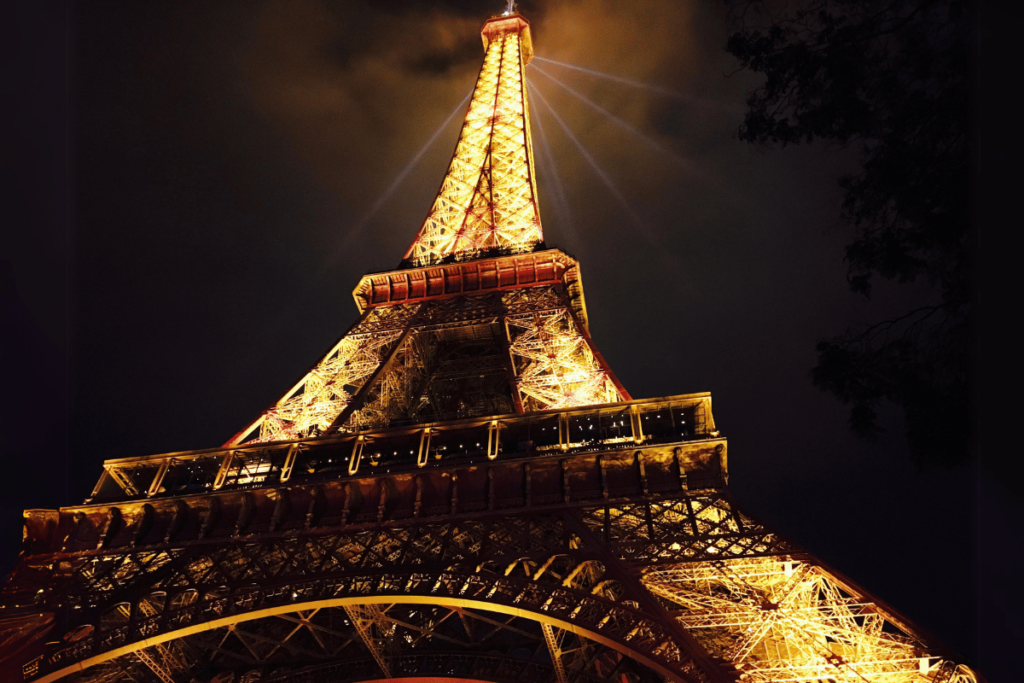
Ever tried snapping photos in a dimly lit room or during twilight hours? That’s low-light photography, and it’s a true test of a camera’s mettle. Low light can mean grainy photos and missed moments if your camera isn’t up to snuff.
When you’re delving into the shadows, things like sensor size and pixel size matter. So do aperture, shutter speed, ISO, image stabilization, and autofocus.
So, you’re wondering, do mirrorless cameras have the edge in these dusky conditions? Well, you’re about to find out. We’ll take a closer look at the factors that affect how well a camera shoots in low light.
Sensor Size
Imagine the sensor as the canvas for light in your camera; the larger it is, the more light it can collect. That’s crucial at night. You want to capture a scene without grainy noise. It screams, “I shot this in the dark!””
Here’s the simple science behind it: A larger sensor has larger pixels. These bigger pixels are like wide-open arms, ready to catch more light. And with more light, you have a better chance of getting a clear shot. You won’t need to raise the ISO too high.
So, let’s circle back to our burning question: “are mirrorless cameras better in low light?” Mirrorless cameras often have larger sensors than compact cameras. They are giving traditional DSLRs a run for their money.
In mirrorless cameras, you’ve got options. They range from APS-C to full-frame sensors. All promise better low-light performance.
Pixel Size
The debate is over whether mirrorless cameras are better in low light. Pixel size is a key factor in this. Most mirrorless models don’t play the ‘how high can you go’ megapixel game. Instead, they focus on the sizeable efficiency of each pixel’s light-gathering prowess. And that’s why your new mirrorless friend could be your knight in shining armor when the sun goes down.
You see, they have larger sensors and pixels. Mirrorless cameras are good at turning grainy, dim scenes into clear photos. They do this by capturing many details. Here’s where it gets interesting. Larger pixels collect more light and reduce noise. So, you’re likely to capture deep images even in bad light.
Lens Aperture
This little gem is your gateway to capturing stellar shots when the lights dim. Remember, it’s about how much light you let in. Aperture is the bouncer at the club. It decides who gets past the velvet rope.
Aperture is measured in f-numbers, like f/2.8, f/4, f/5.6, and so on. The lower the number, the bigger the opening, which means more light hits your sensor. It’s a basic idea. It can transform your low-light photos from “meh” to “wow.””
Now let’s dive into the thick of it:
- Larger apertures (small f-numbers) It lets your camera soak up more light. It also makes creamy bokeh, blurring the background and making your subject pop.
- Smaller apertures (large f-numbers) are like turning down a dimmer switch. They bring more of the scene into clear focus, making everything sharp as a tack.
It’s this balance you’ll toy with to nail those low-light shots with your mirrorless pal. It’s not all about sensor size—aperture plays a pivotal role too.
Imagine you’re trying to capture the charm of a candlelit dinner. A large aperture lets you work with the moody ambiance, rather than against it. But, switch scenes to a city at dusk. A smaller aperture might be just the ticket for getting all those details crisp and clear.
Mirrorless cameras usually have fast, wide lenses. So, you’ve got a good shot at great low-light photos.
Shutter Speed
Shutter speed is measured in seconds, or more commonly, fractions of a second. It is the length of time your camera’s shutter stays open to let light in. It’s the delicate dance of exposure and motion. You freeze the frame at a fast speed or embrace the blur at a slower one.
Mirrorless cameras are great in the dark. You might wonder, “are they better in low light due to shutter speed?” The key is not the camera type but how you balance the exposure triangle. It has ISO, aperture, and, yes, shutter speed.
Taking great low-light photos takes more than just raising the ISO. It also takes widening the aperture. It’s about symbiosis—harmonizing shutter speed with the rest of your toolkit. Faster speeds need higher ISO or a larger aperture. Slower speeds are a whisper to steady your camera and let the light in.
Mirrorless cameras offer the gift of real-time exposure preview. This is a boon for low-light situations. You’ll see the impact of shutter speed changes on the fly. This will make it easier to experiment and find the sweet spot for each unique scene.
ISO
Imagine ISO as your camera’s superpower for seeing in the dark. It amplifies the signal from the sensor, brightening your images. But great power brings great responsibility. Changing the ISO has key trade-offs.
At higher ISO values, your photos get brighter. This is perfect for capturing a night scene without a flash. This also allows for faster shutter speeds. They freeze the action and smaller apertures make for a deeper depth of field.
lower ISO settings demand more light but reward you with pristine image quality. You might need slower shutter speeds. Larger apertures could blur more of your background.
Mirrorless cameras have changed low-light photography. This is largely due to their real-time exposure preview. It lets you see the impact of ISO changes live. You can push the ISO higher and immediately see if the noise creeps in. If so, you might dial it back just a notch or perhaps compensate with a slower shutter speed or a wider aperture.
Your mirrorless camera has a dynamic ISO range. It can be the ally you never knew you needed. It helps you capture the night in all its glory.
Image Stabilization
When shooting in low light with your mirrorless camera, you see that any tiny movement can turn a sharp image into a blur. That’s where Image Stabilization (IS) comes aboard. It’s the unsung hero. It lets you shoot at slower shutter speeds without the harsh camera shake.
There are two main types of IS: Optical and Electronic. Optical stabilization is like a trusty safety net. It physically moves elements in the lens or sensor to counteract your shaky hands. Electronic stabilization? Think of it as a clever digital artist. It crops and shifts your image to keep it sharp.
To get the most out of your camera’s IS:
- Use it in combination with a good lens aperture.
- Match it with an appropriate shutter speed to complement the stabilization.
Use these strategies. You’ll see why mirrorless cameras are often called superior in dark settings.
Autofocus
You’ve probably noticed how your camera lens whirs to life and gets your subject into sharp focus. That’s autofocus (AF) making your life easier. In mirrorless cameras, AF is generally split into two types:
Contrast-Detection Autofocus
- Measures contrast on the sensor
- Adjusts lens for peak contrast and focus
- Relatively slower, especially in low light
Phase-Detection Autofocus
- Deploys a separate sensor
- Splits light into two images to compare
- Faster, more accurate even when the lights dim
Phase-detection AF nails focus quickly and is adept at tracking moving subjects. Contrast-detection, while slower, can sometimes yield more precise focus in still photography. But, when the lights go down, phase-detection is the hero for your mirrorless camera. It is better than contrast-detection.
In low-light, contrast-detection might stumble. But, phase-detection powers through. It makes sure you don’t miss the magic moment at dusk or the twinkle in someone’s eye at a candle-lit dinner. Here’s a quick glance at their differences:
| Autofocus Type | Speed | Accuracy in Low Light | Ideal Situation |
|---|---|---|---|
| Contrast | Slow | Less Accurate | Still Photography |
| Phase | Fast | More Accurate | Low Light/Movement |
Conclusion
The type of camera alone does not determine the best camera for low-light photography. It’s also about the features of the camera and lens, and the skill and style of the photographer. It’s a dance of sensor size, pixel size, aperture, and more.
Share your low-light mirrorless camera experiences or thoughts in the comments. For more photography tips, visit my website and follow me on social media.
Frequently Asked Questions
What is the importance of sensor size in low-light photography?
Sensor size is crucial in low-light photography because larger sensors capture more light, leading to less noise and higher image quality under dim lighting conditions. This is particularly important when shooting at high ISO values or in environments with minimal illumination.
How does lens aperture affect low-light photography?
The lens aperture, which is the opening through which light passes, greatly affects low-light photography. A wider aperture (lower f-stop number) allows more light to reach the sensor, enabling better performance in dim settings and allowing for faster shutter speeds to minimize motion blur.
What is the impact of shutter speed on low-light photography?
In low-light photography, shutter speed determines how long the camera’s sensor is exposed to light. A slower shutter speed allows more light to enter, which is beneficial in low-light conditions, but can also introduce motion blur if the subject moves or if there’s camera shake. A balanced shutter speed is essential to capture clear and sharp images without blur.
What are the benefits of using a mirrorless camera in low-light situations?
Mirrorless cameras offer benefits like real-time exposure previews, allowing photographers to see the exposure outcome directly through the electronic viewfinder or on the LCD screen. This feature helps in making immediate, accurate adjustments to settings in low-light conditions.
How does ISO sensitivity affect image quality in low-light photography?
ISO sensitivity refers to the camera sensor’s sensitivity to light. Increasing ISO allows for better performance in low light but can also lead to more noise (graininess). Adjusting ISO is a critical aspect of the exposure triangle (ISO, shutter speed, aperture), especially in low-light situations.
What role does image stabilization play in low-light photography?
Image stabilization helps to minimize camera shake, allowing photographers to use slower shutter speeds without introducing motion blur. This is particularly important in low-light photography where slower shutter speeds are often necessary. Both optical and electronic stabilization systems can significantly improve image sharpness in dim conditions.
What is the difference between contrast-detection and phase-detection autofocus, and which is better for low-light photography?
Contrast-detection autofocus works by analyzing contrast levels on the sensor, while phase-detection autofocus quickly measures the convergence of two light beams. In low-light photography, phase-detection is typically preferred due to its faster and more accurate focusing abilities in less-than-ideal lighting conditions.

